Blooming in late summer and early fall, are these spikey yellow flowerheads of Verbesina alternifolia, wingstem. It is a tall native perennial herbaceous plant. It is also known as yellow ironweed.
Flowers
Inflorescence, flower cluster, flowerhead
Verbesina alternifolia, wingstem is a member of the Daisy/Composite family, Asteraceae/ Compositae. It is also known as the aster or sunflower family. What we usually call a single flower is actually the inflorescence, flower cluster. The flower is a composite, made up of many tiny flowers. These multiple tiny stalkless flowers are attached to a receptacle/disc. The inflorescence is also called a flowerhead or capitulum. The individual flowers are called florets.
Wingstem brings us a cheery bright bouquet of yellow flowers. The flowerhead is 1 to 2 inches across. It has only 2 to 10 petals which are actually ray florets. The petals frequently droop. The disc florets are relatively large for a composite and they radiate up and outward giving the flowerhead a spikey look.

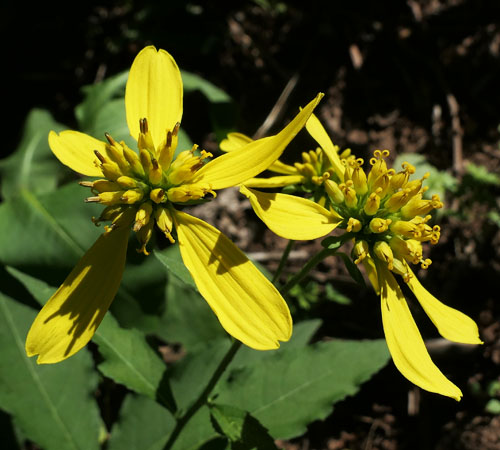
In the photo below, the blue arrows indicate a disc flower in the male stage. The red arrows point to florets in the female stage and the green points to a floret that is a bud/immature.
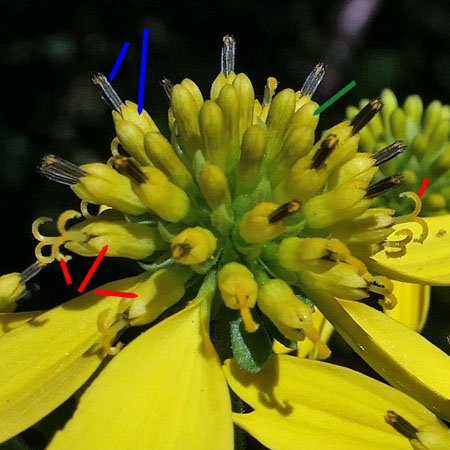

The photo of immature ray (long outer) and disc (short inner) florets.

Photo of the back of a flowerhead. The green structures are phyllaries. Phyllaries are small bracts, leaf-like structures that form whorls below the flower head. Note the hairy stem.
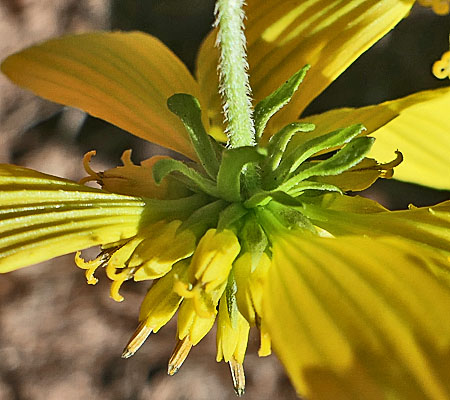
Flowers, florets:
There are two types of florets - ray florets and disc florets. Some composite species have only one type but wingstem has both. The ray flowers form around the edge of the flowerhead and each ray flower produces a 'petal'. The 'petal' is actually the fusion of 5 petals which are opened and flattened. The disc florets are in the center and have a tubular corolla formed from 5 fused petals. In wingstem, the ray florets are sterile and the disc florets are bisexual.
Photo below: Disc floret in male phase. The floret starts in the male phase. The yellow is the corolla. The dark brown part (at the right of the photo) is the anther part of the stamen. The 5 anthers are fused into a ring/cylinder. Only the anthers are fused. The filaments are not fused.
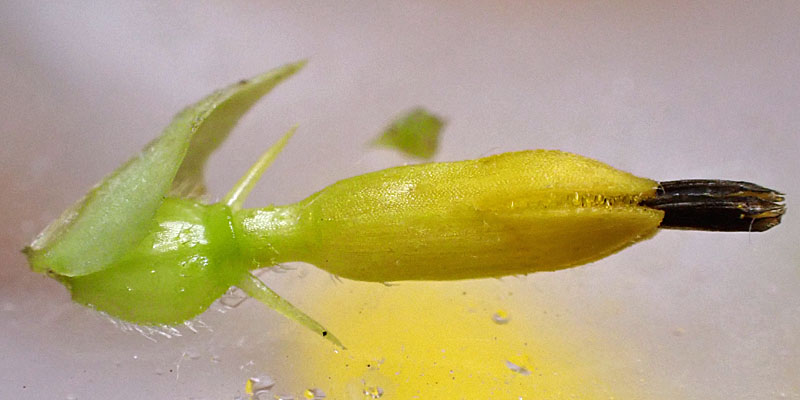
Photo below: Disc floret in female phase. At the right of the photo is the curled bilobed stigma. Hairs can be seen at the tips of the stigma. The ovary is below the corolla (slightly darker green in photo) and is termed - inferior ovary. Note the two sharp pointed structures. They persist on to the seed. The leaf like structure further to the left in the photo is a receptacle/disc bract which persists on the fruit head.

A look inside a dissected floret bud in the photo below. The corolla tube is opened and then the ring of anthers is opened. Inside the ring of anthers is the style and stigma of the pistil. The anthers release their pollen into the inside of the ring of anthers. At this stage of the bud the anthers have already dehisced, released their pollen. Some pollen can be seen on the inner surface of the anthers and on the style/stigma.
As the bud matures, first the ring of anthers emerges from the corolla tube - going into the male phase first. With the pollen located inside the ring, there needs to be a mechanism to make the pollen available to insects and other pollinators.
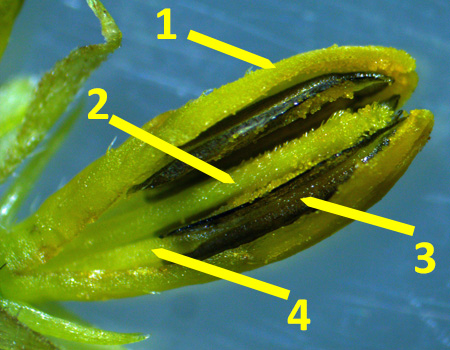
- corolla
- style with stigma at end
- fused anthers
- filament (free)
A look inside a floret in the male stage in the photo below. Note the free filaments- blue arrows in photo. Only the anthers are fused to form a cylinder with the style and stigma inside. The red arrow points to the style. The stamen elongates and extends beyond the corolla. The florets continue into the female stage when the style grows and pushes the pollen out of the anther ring. The style acts like a plunger. All the composites do this. We first came across this mechanism with the cardinal flowers.
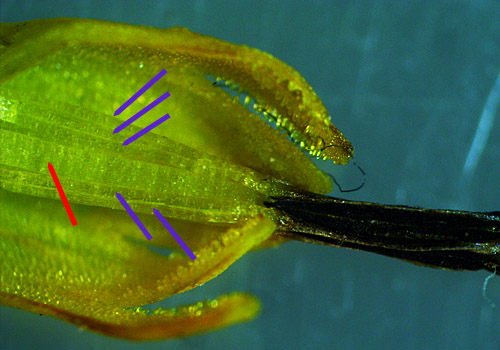

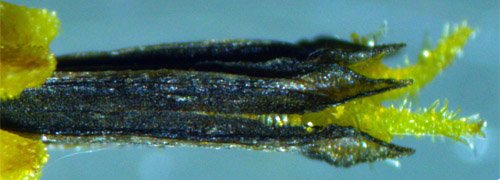
Female stage development: The pollen is presented at the top of the ring of anthers by the growing style/stigma; the style continues to grow and the stigma divides and curls back exposing the sensitive surfaces to collect pollen from another flower. Afterwards, the anther ring begins to die off.
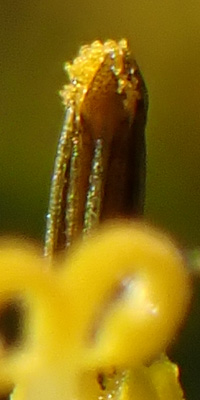
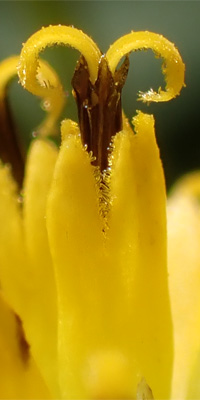
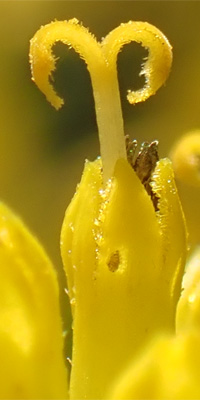

A look inside floret in the female stage. The corolla tube has been opened.
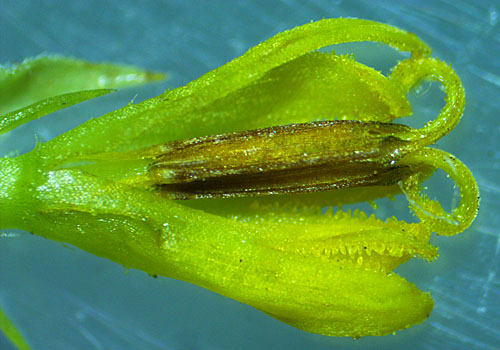
Note the free filaments. Only the anthers are fused to form a cylinder with the style and stigma inside. The anther ring appears to be intact at this point.
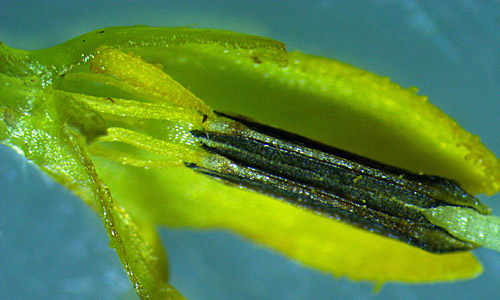
A close up of the curled stigma.

Fruit
Fruit
After pollination, the corollas fall off, the ovaries begin to develop, seeds form and dry and harden and fall off leaving only the receptacle/disc bracts. The seed has 2 awns (bristles that were seen in the floret stage) at the tip and usually has 2 side wings. Occasionally, the wings do not develop. Technically, these 'seeds' are fruits called cypselae.
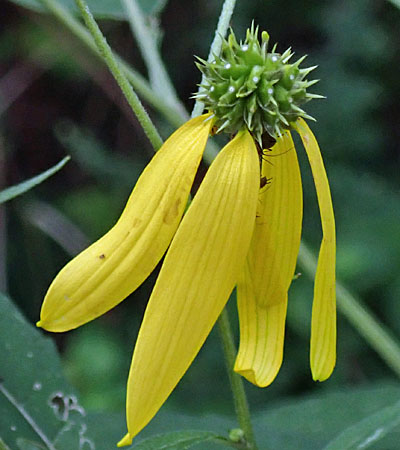
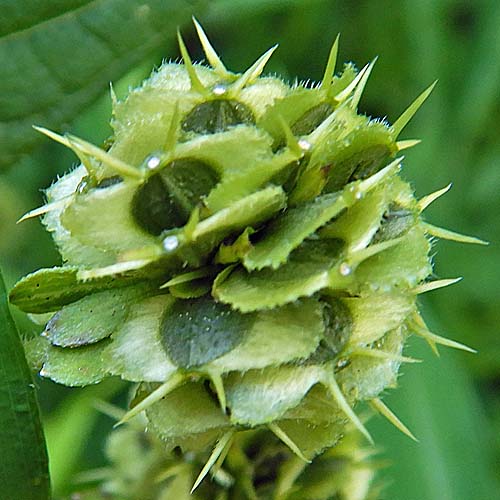
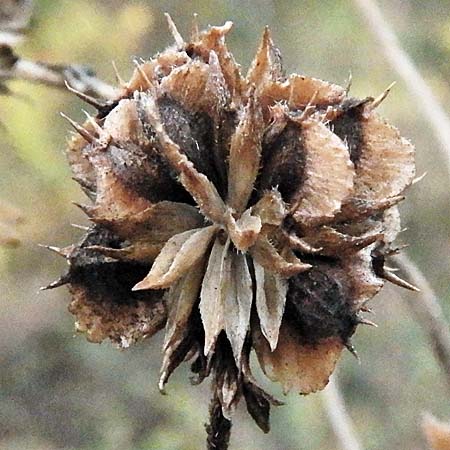
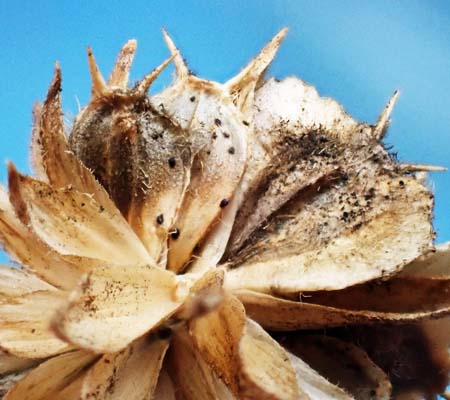
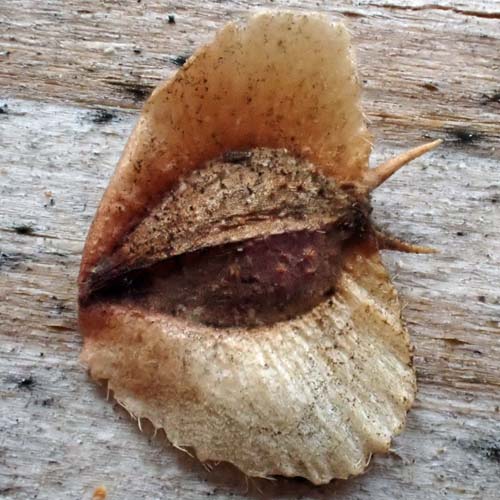
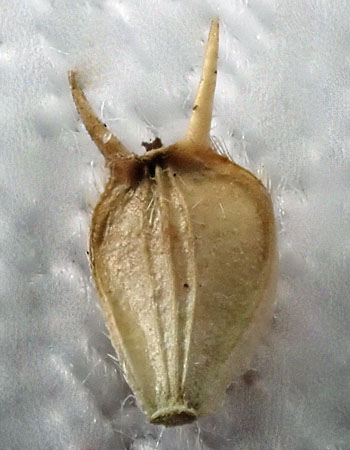
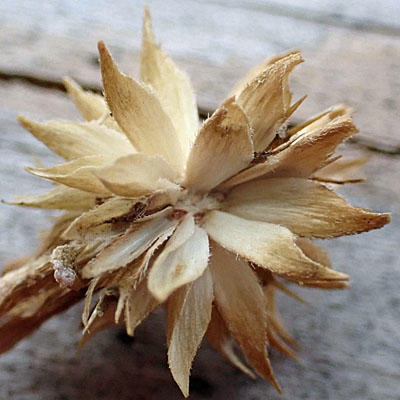
Leaves
The wingstem leaves are lanceolate (widest below mid-length) or elliptic (widest at mid-length) in shape coming to a narrow point at the far end and tapering to the base. The base can be somewhat sessile or a short winged petiole. The margins coarsely toothed. The leaves are mostly alternate. The leaves are 4-10 inches long.
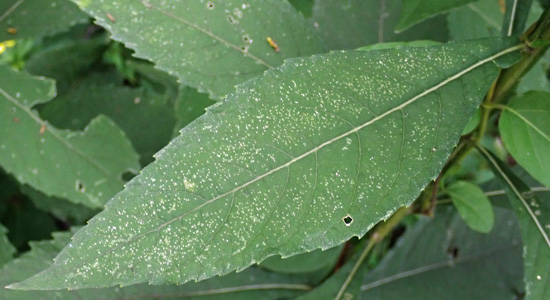

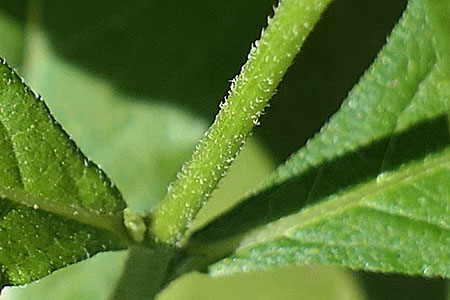
Wings are formed sometimes along the base of the leaves and stem. The lower stems are more likely to be winged. Yellow arrow - wing on stem, red arrow - wing at base of leaf.
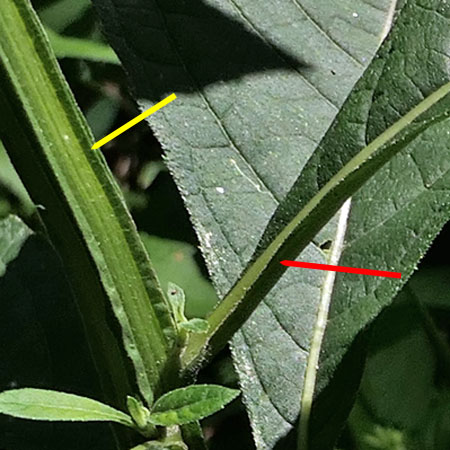
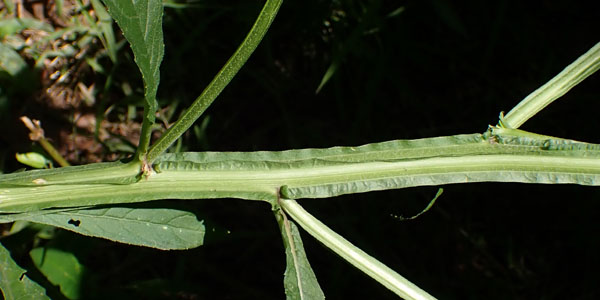
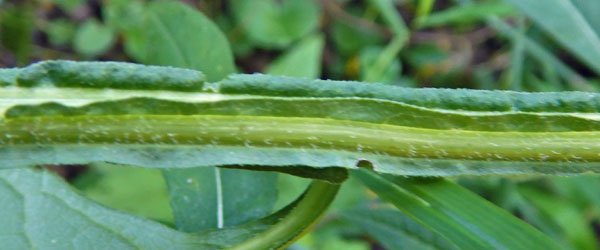
The upper surface of the leaf is rough. The lower is also rough but less.
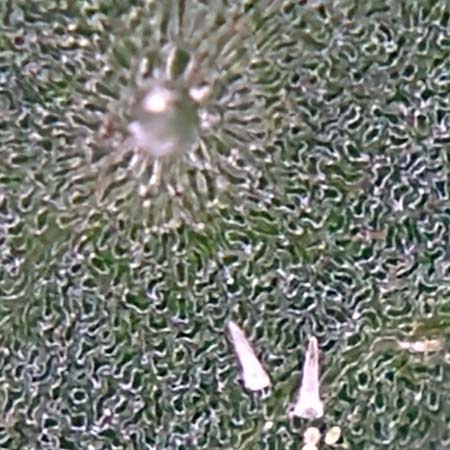
Plant & Habitat
Wingstem plants are 3 to 8 ft tall. The plant sends out single/multiple stems from the base that are erect and do not branch until the top with the flowers. The plant likes moist semi-shade areas. It has rhizomes so it spreads vegetatively in addition to seeds.
The flowers attract a host of insects. When we are trying to photograph or look closely at the flowers we had to wait out/ shoo off the bees and other insects
The largest population we've seen was on a hike along the North Branch of the Raritan River in Bedminster click here .
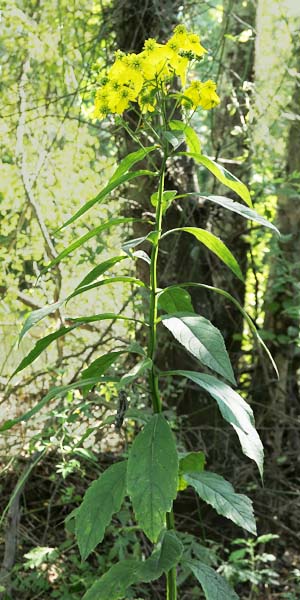

Text by Millie Ling and all photos by Hubert & Millie Ling. Dissections by Hubert Ling. Photos: cultivation & Somerset County, flowers taken mid to late September 2022.
Additional information / References
Additional information / references:
- Excellent description: https://www.missouriplants.com/Verbesina_alternifolia_page.html
- Excellent description: https://www.illinoiswildflowers.info/savanna/plants/wingstem.htm
- Great introduction to botany of composites: https://cronodon.com/BioTech/asteraceae.html
- Excelent gardening information: Jersey Friendly Yards https://www.jerseyyards.org/plant/verbesina-alternifolia/
- iNaturalist - observations in NJ: https://www.inaturalist.org/observations?place_id=51&subview=map&taxon_id=117442
- NatureServe - distribution & rarity: https://explorer.natureserve.org/Taxon/ELEMENT_GLOBAL.2.159242/Verbesina_alternifolia